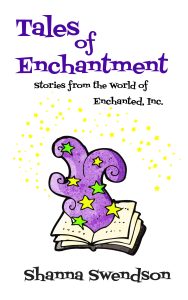Since last Friday was Bastille Day, I decided to go for something French for my Disney animated movie. Now that I think about it, The Aristocats might not have been an appropriate choice, but then it is a fantasy about the wealthy ending up meeting the needs of the poor, so I guess it kind of works. Anyway, I needed something fun, and this one is fun.
The Aristocats was one of my favorites when I was a child. It was released when I was a toddler, so I don’t remember if I saw it in the original theatrical run, but I did see it during my childhood because I related the story and songs album to the movie itself instead of the other way around. I identified with the kitten Marie since Marie is my middle name, and I loved the dogs. Watching as an adult, I still enjoyed it. I laughed out loud a number of times, especially during the parts with the dogs, and I could barely sit still during the “Everybody Wants to Be a Cat” musical number. Supposedly, this was during the “cheap” era for Disney, and there is some sketchiness to the artwork, but it works as an artistic choice. The images look like they’ve come off a sketchbook. Possibly because there are so few songs, the story and songs album contained a lot of clips of scenes from the movie, and I can still recite some of the dialogue from memory, right down to inflection.
There’s an oddly timeless quality to the movie because of all its anachronisms. About the only clue that this movie was from 1970 is the fact that a lot of the cast were from fairly recent sitcoms. They cast from The Odd Couple, Green Acres, the Andy Griffith universe and The Beverly Hillbillies, and this movie seems to have formed something of a Disney repertory company because most of the cast also ended up in Robin Hood. Otherwise, we’ve got early 50s beatniks and be-bop type jazz, some 30s-40s swing performed by someone who was a star of that era, and some late 60s psychedelic imagery in a movie set in Belle Epoque Paris. And yet it all works.
I wonder if the music and the inclusion of Phil Harris were that era’s equivalent of Pixar making movies on two levels, with stuff to appeal to kids and broader themes that speak to adults, but he was really even from before the time of the parents of that generation. It would kind of be like making an animated movie now and getting Boy George to voice one of the characters and do the singing, with the animated character being based on his early 80s persona. Harris was a 1930s radio and movie star as a big band singer, and then he had a career revival as a popular Disney voice.
One thing I found fun is that the cats are drawn and animated differently depending on whether or not humans are present. When humans are there, they’re drawn more “realistically” (for cartoon drawing values of “realistic”) and move and behave a lot like real cats. Then when humans aren’t around and they’re talking, they’re more like anthropomorphic cartoon cats. You get the impression that the humans can’t hear the animals talking to each other. But then at the end, the humans apparently can hear the cats playing musical instruments, so that illusion of reality shatters a bit. I’m not sure if the evil butler could understand the dogs when they were talking to each other while he was trying to retrieve his belongings from them.
This movie does a little better with gender representation than a lot of the Disney films I’ve been watching, from either the “Classic” or “Revival” era. We have Duchess, Madame, Marie, the horse, and the geese as female characters. Having Marie around means Duchess doesn’t have to be the damsel in distress so O’Malley can show his valor by rescuing her. He gets to rescue the kitten instead, and then he gets rescued by the geese. I guess you could even say Duchess has a female friend in Madame.
Fun trivia note: the scene in Rebel Mechanics in which Henry has to go to the Rebel headquarters to warn them and they’re hostile to him because of who he is was largely inspired by the scene in which the mouse has to go to the alley cats to ask them to come to the aid of Duchess and the kittens. It was mostly just the idea of someone having to go among people who would see him as an enemy, but this scene was definitely in my mind.
I did notice a few things as an adult that would have flown over my head when I was a kid. For one, who was the father of Duchess’s kittens? They’re not that old, maybe a few months, so it’s been maybe six months at most since she was with another cat. She’s a pampered pet with no knowledge of the outside world and no survival skills, so it wasn’t as though Madame took in a pregnant street cat. Duchess clearly wasn’t allowed to roam, so how did she get pregnant? Did Madame breed her? The idea of that gets a bit icky when you’re looking at Duchess as an anthropomorphic sentient, talking character. Either this was nonconsensual or she developed a relationship, only to be taken away from her lover after the deed was done. Marie looks just like Duchess, so it doesn’t seem like Madame took in some kittens and Duchess adopted them.
The other thing that I picked up on was a reference to Madame having been some kind of opera performer, so either a singer or a ballet dancer. Basically, she was Christine from Phantom of the Opera — and probably would have been performing around that time. But it also means she’s not actually an aristocrat. An aristocrat wouldn’t have become an opera performer. She also might not have obtained that much wealth just from her success as a performer. There’s a pretty good chance she was a mistress to an aristocrat, and she got some of her wealth that way. She might have moved in those circles in companionship to her patron, but not in her own right. It’s her pets who become the aristocrats because they were born into wealth and status and were going to inherit money.
From a story structure standpoint, this one gets a little odd. It’s mostly a villain-driven story. It’s the butler who has a goal, comes up with a plan to achieve that goal, and faces conflict in attempting to reach that goal (before failing). But as with many villain-driven stories, there’s no real character arc for him and he doesn’t learn anything or change. Duchess has the goal of getting back home, but she isn’t all that active in going after it. She just accepts the help that comes up and doesn’t really initiate anything (though she does make decisions about who to accept help from). She also doesn’t really learn anything, aside from developing an appreciation for jazz. The character with the growth arc is O’Malley, who starts out not wanting to get involved with a lady with kids but ends up becoming a protective father figure to the kittens and giving up his alley cat life. But he doesn’t really have any goal. He’s helping them get home, but that doesn’t matter that much to him, and he even discourages them from going home when they get to Paris. He’s not keen on getting involved with someone with kids until later in the story and only comes along on the journey more or less by accident, so he doesn’t seem to have the goal of winning Duchess. So, who’s the protagonist?
The fact that so many of these movies don’t have some of the key story ingredients suggests that maybe all those writing gurus don’t know everything. I doubt you’d sell a screenplay in today’s Hollywood without having the key structural elements, but you clearly can have a successful, entertaining story without ticking all the boxes, as long as it works. If your audience is saying, “But what do they want?” you’ve got a problem, but if they’re having too much fun to notice, then it works.
I’m afraid the line “That’s just a little ol’ cricket bug” is going to work its way back into my regular vocabulary. I’d forgotten this was where that came from, but it used to come up a lot, along with “I’m the leader.”
I may stick with the “jazzy” theme this week and watch The Jungle Book. For that one, I may not even set up my lounger. I’ll need room to dance around the living room.


